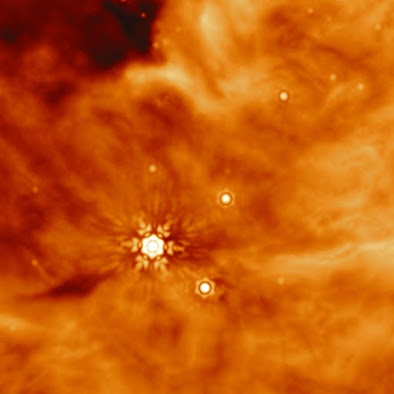Hold onto your spacesuits, fellow stargazers, because the James Webb Telescope just beamed back a discovery that'll have you raising a metaphorical glass (or spacesuit helmet) to the universe! Yep, you read that right. We're talking about the key ingredients for… well, not exactly a margarita, but life as we know it!
Here's the gist: Webb, our newest cosmic snoop, spotted some fascinating molecules swirling around two young stars, those pre-teen suns called IRAS 2A and IRAS 23385. These aren't your run-of-the-mill space rocks, mind you. We're talking about complex organic molecules, the fancy kind that includes things like ethanol (that's the fun stuff in alcoholic drinks) and possibly even acetic acid (the vinegar in your salad dressing).
Now, these stars haven't even started the whole planet-forming business yet, which makes this discovery even more mind-blowing. It suggests that the building blocks of life might be scattered throughout the universe like celestial sprinkles, waiting for the right conditions to bake up a habitable world.
This is a big deal for a few reasons. First, it confirms what some brainiac scientists had cooked up in their lab experiments – that these complex molecules could exist around baby stars. Second, it gives us a peek into the messy crib of our own solar system. Maybe these icy ingredients were hanging around our young sun way back when, eventually leading to the whole life-on-Earth party.
And lastly, and perhaps most excitingly, it hints at the possibility of future life around these young stars. Imagine planets forming around IRAS 2A and IRAS 23385, swirling with the very ingredients that could cook up something… well, something interesting, at the very least.
Of course, there's still a lot we don't know. But that's the beauty of space exploration, right? Webb is just getting started, and with its incredible detective skills, it'll be dissecting these icy clouds further, revealing even more secrets about the potential for life beyond our blue marble.
So, the next time you raise a glass to the stars, remember, the universe might be holding a much more complex cocktail than we ever imagined. Cheers to Webb, to science, and to the never-ending quest to find our place in this cosmic mixing bowl!

Comments
Post a Comment